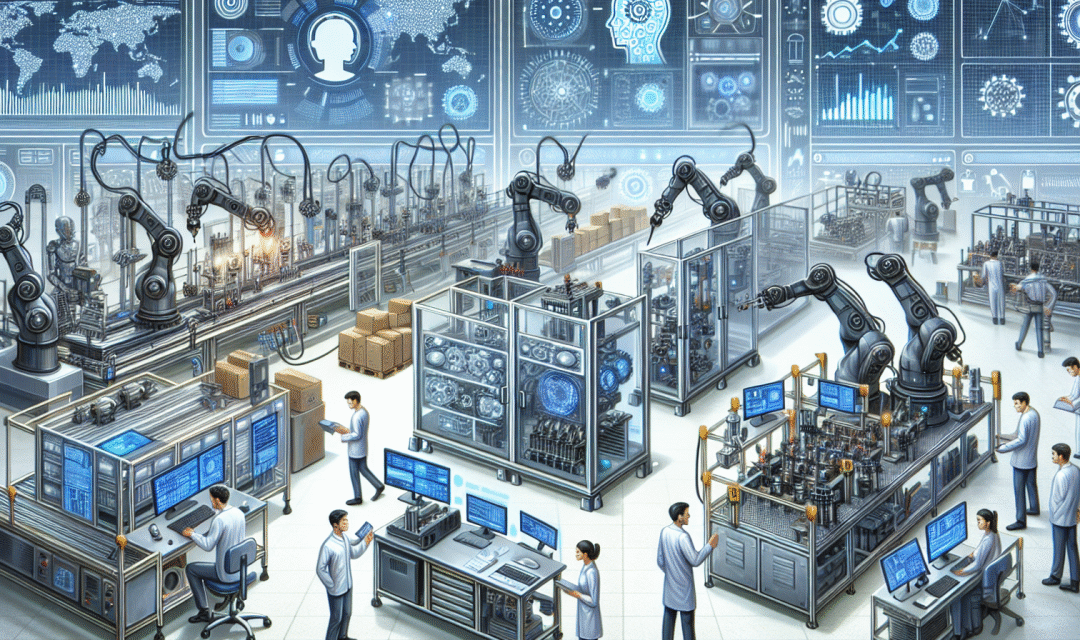Understanding the stroboscopic effect is crucial for anyone involved in quality checks within industrial settings. This phenomenon has a profound impact on how we perceive motion and can significantly influence the quality assurance process. The stroboscopic effect is an optical illusion that occurs when continuous motion is represented by a series of short or instantaneous samples. This can lead to misinterpretation of machine operations and affect the overall quality checks.

What Is the Stroboscopic Effect?
The stroboscopic effect is a visual phenomenon that creates an illusion of motion or stillness when an object is viewed in a flashing light. In industrial environments, this effect can help in identifying faults in machines by making them appear to move slowly or to be stationary, even though they are in motion.
Importance in Industrial Settings
In industries, the stroboscopic effect is used extensively to enhance the accuracy of quality checks. It helps engineers and quality assurance professionals to observe the operations of machinery without stopping the production line. This not only saves time but also increases efficiency.
How It Works
Using stroboscopes, which are devices that produce a flashing light at adjustable frequencies, professionals can synchronize the flash rate with the moving parts of a machine. This synchronization creates the illusion of stillness, allowing for detailed inspection of the machine’s components. For more information on how stroboscopes work, you can visit this guide.
Applications in Quality Checks
Enhancing Visual Inspection
The stroboscopic effect aids in enhancing visual inspections by allowing professionals to detect anomalies in moving parts. This is particularly useful in sectors where precision is critical, such as automotive and electronics manufacturing.
Reducing Machine Downtime
By using the stroboscopic effect, industries can significantly reduce machine downtime. Since inspections can be carried out without halting operations, the time saved can be redirected towards production, thereby increasing overall efficiency. For more insights on minimizing machine downtime, check this resource.
Improving Safety Standards
Safety is paramount in industrial environments. The stroboscopic effect can help in identifying potential hazards by making subtle issues more apparent, thus preventing accidents before they occur.
Challenges and Considerations
Potential for Misinterpretation
One of the primary challenges with the stroboscopic effect is the potential for misinterpretation. If not used correctly, it can lead to incorrect conclusions about the state of machinery.
Need for Skilled Personnel
Operating stroboscopes requires skilled personnel who understand both the equipment and the processes they are inspecting. Training is essential to ensure accuracy in quality checks.
Technological Advancements
Recent technological advancements have improved the utility of the stroboscopic effect in quality checks. Modern stroboscopes offer better control and more precise adjustments, making them indispensable tools in today’s industrial landscape. For more on modern stroboscopes, visit the ELMED Helio-Strob overview.
Integrating with Digital Systems
Integration with digital systems has further enhanced the capabilities of the stroboscopic effect in quality assurance. Digital interfaces allow for better data collection and analysis, leading to more informed decision-making. Discover more on digitizing maintenance processes here.
Conclusion
The stroboscopic effect plays a vital role in modern quality checks within industrial settings. It offers a unique way to observe and analyze machine operations in real-time, leading to increased efficiency, safety, and productivity. As technology continues to advance, the potential applications of this phenomenon in quality assurance are likely to expand, offering even more benefits to industries worldwide.

Frequently Asked Questions
What industries benefit most from the stroboscopic effect?
Industries such as automotive, electronics, and manufacturing benefit significantly from the stroboscopic effect due to the precision required in these fields.
Can the stroboscopic effect be used on all types of machinery?
While it is versatile, the effectiveness of the stroboscopic effect depends on the type of machinery and the specific conditions of its operation.
How does the stroboscopic effect improve safety?
The stroboscopic effect improves safety by allowing for the early detection of potential faults and hazards, thus preventing accidents before they occur.
This article contains affiliate links. We may earn a commission at no extra cost to you.
